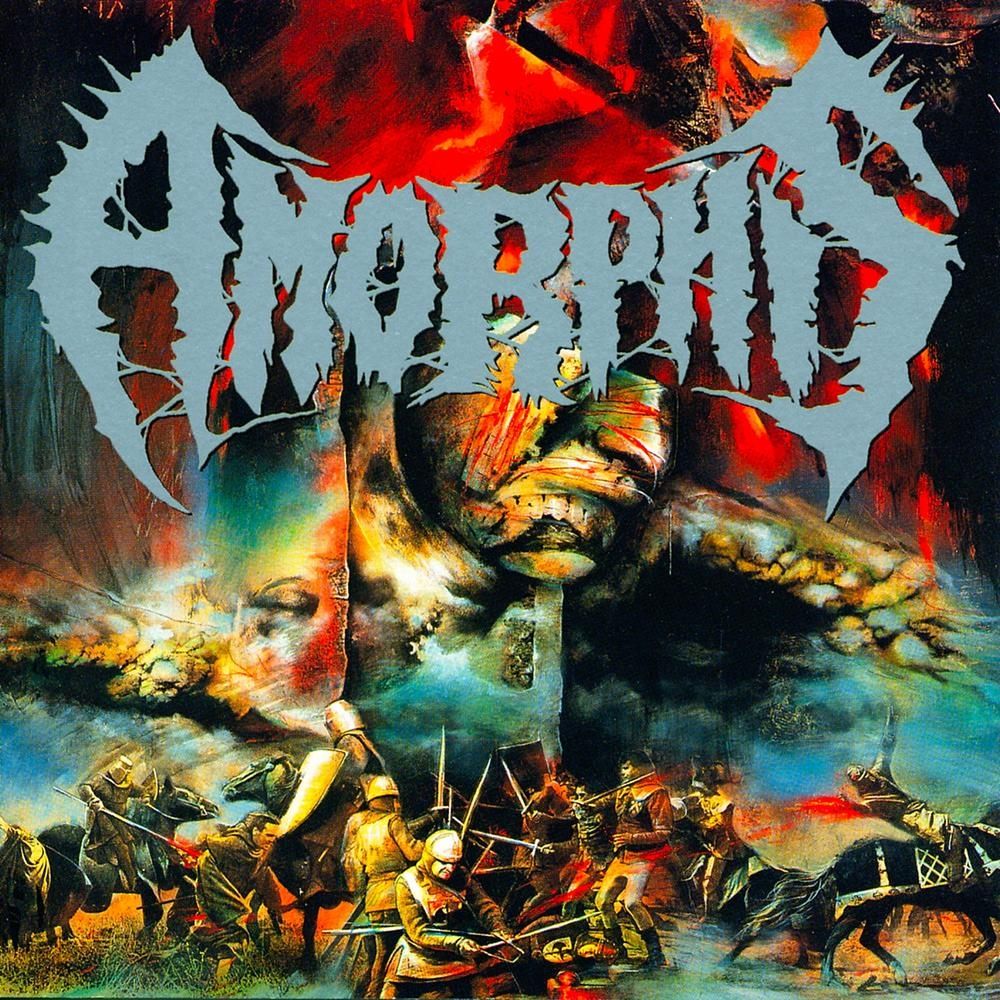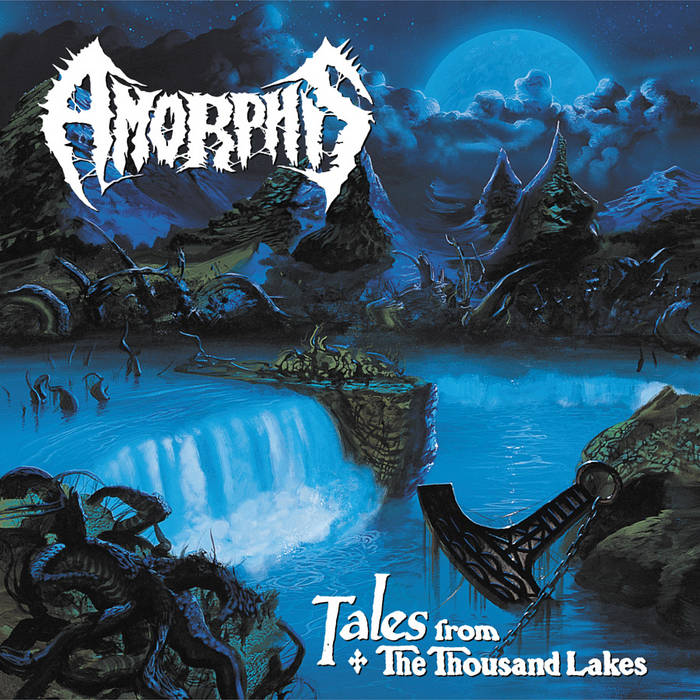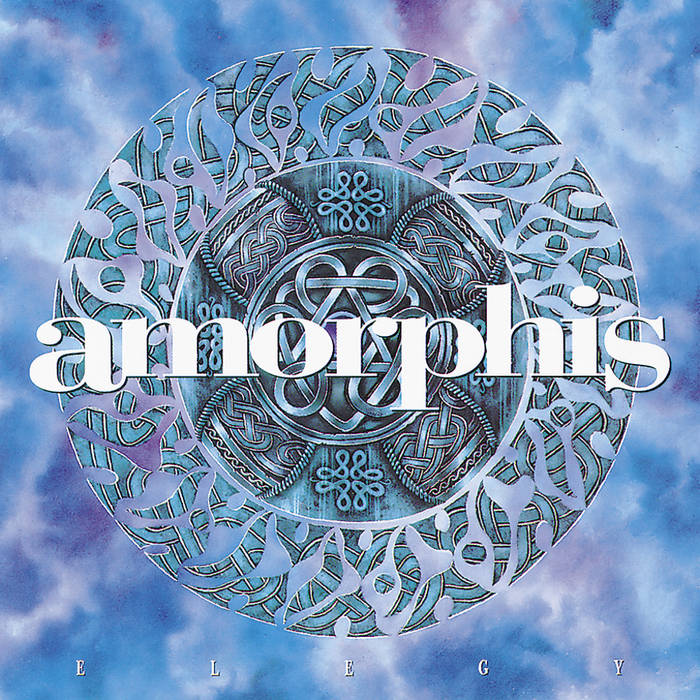Amorphis and the Cartography of Mythic Sound
In the shifting undercurrents of 1990s Heavy Metal, few bands charted a course as bold or as poetic as Amorphis. Emerging from the frosted soil of Finland, they began as architects of Death and Doom, conjuring sonic monoliths with martial precision. But their journey would prove far more serpentine than many of their peers. By the end of the decade, Amorphis had not only shed their growls and double kick bombardments but had also forged a sound that reverberated with the pulse of myth, folklore, and introspection. Their path from “The Karelian Isthmus” to “Tuonela” maps a transformation from brute force to melodic transcendence a metamorphosis as courageous as it was inevitable.
To chart this evolution is to trace a deeper story, not merely of stylistic change but of cultural reclamation. Through riffs, rhythms, and reverberations, Amorphis resurrected the ancient Finnish imagination, breathing new life into the Kalevala, the national epic that lay dormant in dusty archives. Their work across the 1990s is nothing less than a sonic archaeology of identity, performed at full volume.
“The Karelian Isthmus” (1992): Death Marches from the Frozen North
Amorphis' debut, “The Karelian Isthmus” landed like a battle axe into the chest of early death metal. Released by Relapse Records at a time when the genre was fracturing into various brutalist factions, the album bore the unmistakable hallmarks of the era: down tuned guitars, cavernous growls, martial drumming. Yet even in this relatively straightforward offering, there were signs of something else, a yearning for the melodic, a fascination with the epic.
While the record is often dismissed by the band themselves as a transitional release, The Karelian Isthmus holds its own as a ferocious and strangely dignified slab of death/doom. Tracks like “Grails Mysteries” and “Black Embrace” combine Bathory style grandeur with Bolt Thrower type momentum, all filtered through a uniquely Finnish sense of melancholy. The guitar harmonies often slip into melodic minor territory, hinting at the modal stylings that would later become central to Amorphis' identity.
Thematically, the album's references to pagan warfare and mystical landscapes foreshadow the mythopoetic directions of later records. Though its title refers to a real geographical area, the contested land between Finland and Russia, the record feels less like a historical account and more like an evocation of an eternal battlefield, a frozen limbo where warriors march endlessly through snow and shadow.
In retrospect, “The Karelian Isthmus” serves as the overture to a much grander symphony, its brutality cloaking the embryonic spirit of a band not yet sure of its destiny but already haunted by it.
“Tales from the Thousand Lakes” (1994): Myth Made Flesh
The real turning point came in 1994 with the release of “Tales from the Thousand Lakes”, a record that rewrote the rules not only for Amorphis but for melodic Death Metal. Gone were the straightforward riffs and relentless death, bludgeoning of Karelian; in their place emerged glimmering keyboard textures, folk inflected guitar lines, and a lyrical sensibility rooted in national myth.
Drawing heavily from the Kalevala, “Tales…” reimagined Finnish epic poetry as a metal odyssey. Songs such as “Black Winter Day” and “The Castaway” feel like incantations drawn from frost, covered runes. Tomas Koivusaari’s death growls remain intact but are now counterbalanced by melodies that rise like vapours from ancient bogs. The arrival of keyboardist Kasper Mårtenson introduced a new dimension entirely, with Hammond flourishes and atmospheric pads adding a ghostly warmth to the soundscape.
The production, crisp, airy, almost spacious, reflected the band’s expanded vision. Every instrument breathes. Even in the heavier moments, such as “Into Hiding”, there is a sense of verticality, of songs unfolding not just across time but across terrain. This was no longer just music, it was landscape, geography rendered audible.
What makes “Tales…” so enduring is its seamless integration of opposites: brutality and beauty, death and dream, tradition and innovation. It set a precedent not only for Amorphis but for an entire generation of bands who would look to their own cultural pasts for inspiration. In Tales, Amorphis had found their voice, and it spoke with the tongues of gods and spirits.
“Elegy" (1996): The Psychedelic Epic
By the time “Elegy” arrived in 1996, Amorphis had outgrown the constraints of metal orthodoxy. They did not abandon the genre, rather, they reconfigured it. Elegy is a bold, borderless album, where progressive rock, psychedelia, and Heavy Metal coalesce into something entirely its own.
The most dramatic change was vocal. With Pasi Koskinen stepping in to deliver clean vocals alongside Koivusaari’s growls, Amorphis introduced a dialogic structure that mirrored the dualities within the music itself. Songs like “Against Widows” and “My Kantele” oscillate between harsh and melodic passages, between earthly and spiritual registers. This wasn’t merely aesthetic experimentation; it was metaphysical dramaturgy.
Once again turning to the Kalevala for lyrical inspiration, the band wove ancient tales into tapestries of sound. The kantele — the traditional Finnish string instrument — is not merely referenced but sonically evoked, particularly in the acoustic passages of “Weeper on the Shore” and the titular “My Kantele”, where folk scales and modal shifts summon the ghosts of a pre-Christian past.
Sonically, “Elegy” is lush. The keyboards are no longer atmospheric flourishes but foundational elements. The guitar work, particularly Esa Holopainen’s, is melodic, expressive, sometimes even mournful. One hears the influence of Camel, Pink Floyd, and even early Genesis, not in mimicry but in spirit: the freedom to let songs meander, to indulge in digressions, to explore texture as well as tempo. “Elegy” feels like a pilgrimage: a journey inward and backward, towards myth and memory. It is not a metal album in the strict sense, it is a hymn to loss, to cultural mourning, and to the beauty found therein.
“Tuonela” (1999): The Descent into the River
Named after the Finnish underworld — the realm of the dead in the Kalevala — Tuonela is both a culmination and a divergence. It consolidates the experiments of Elegy but with more restraint, more atmosphere, and a deeper sense of melancholy. It is a record of dusk rather than storm, where the songs unfold not in triumphant arcs but in brooding spirals.
Gone are the death growls. Pasi Koskinen now handles all vocal duties, his voice carrying a wearied, melodic weight that suits the material perfectly. Tracks like “Divinity”, “The Way”, and “Summer’s End” throb with sombre elegance, their choruses drenched in sadness yet never lapsing into despair. This is metal not as catharsis but as contemplation.
Musically, Tuonela continues the band’s embrace of folk and progressive elements, but now with a subdued palette. Saxophone appears on “Nightfall”, not as a gimmick but as a natural extension of the album’s jazz,tinged, introspective mood. The production is warm, organic, even autumnal. The edges are softened, the tempos slower, the spaces wider.
Lyrically, the record continues to mine the Kalevala, but in a more interiorised way. Tuonela is not just a place of death, it is a metaphor for transition, for the quiet erasure of ego, for the journey beyond certainty. The album feels like a ferry ride across a mythic river, the songs lapping gently like water against the hull.
While some fans decried the absence of aggression, Tuonela is in many ways the band’s most mature statement to date, a reckoning with change, with finitude, and with the burden of legacy. It marks the end of an era, but also a profound fulfilment of their early artistic promise.
Echoes in the Ice: Legacy and Reverberation
By the end of the 1990s, Amorphis had traversed a musical arc as vast and varied as the myths they reanimated. From the martial chants of The Karelian Isthmus to the psychedelic elegies of Tuonela, they redefined what it meant to be a metal band in an era of flux. They were never content to remain fixed. For Amorphis, sound was always a vessel, a way to carry stories, to resurrect ancestors, to speak with ghosts.
Their influence is difficult to overstate. In Finland, they helped ignite a cultural resurgence in metal, proving that local myth and global sound could not only coexist but thrive together. Bands like Moonsorrow, Ensiferum, and Korpiklaani would take up the folk mantle, while others like Swallow the Sun and Insomnium would expand the melodic and melancholic aspects of Amorphis’ sound.
Yet no one has quite matched their scope. Amorphis were not just playing
songs — they were mapping a national consciousness. Their records from 1992 to
1999 constitute a body of work as cohesive and visionary as any band of the
decade. They are sonic cartographers of the North, etching lakes, forests, and
underworlds into vinyl and CD. And though later records would continue their
evolution, there is something sacred about this early era, a time when the
frost had only just begun to thaw, when the past and present still spoke to
each other through melody, and when Amorphis stood on the shore of Tuonela,
ready to cast off.





Comentários
Enviar um comentário